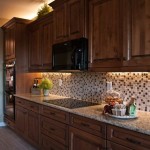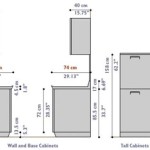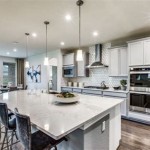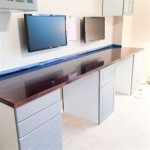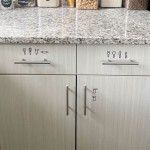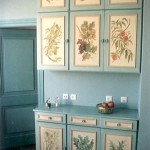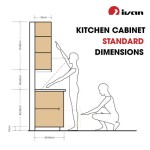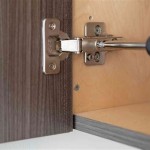Wood Kitchen Cabinets With Wood Floors: A Harmonious Design Choice
The combination of wood kitchen cabinets and wood floors creates a warm, inviting, and timeless aesthetic in any home. This design choice, however, requires careful consideration to avoid a monotonous or overwhelming appearance. Achieving a balanced and visually appealing space involves understanding the nuances of wood species, finishes, undertones, and layout. This article explores factors to consider when pairing wood cabinets with wood floors, offering guidance for creating a cohesive and stylish kitchen.
The allure of wood lies in its natural beauty and versatility. It offers a wide range of colors, grains, and textures, making it adaptable to various design styles, from traditional to contemporary. When selecting wood for both cabinetry and flooring, striking the right balance is crucial. The goal is to create a space that feels unified and inviting, without being visually boring or feeling like an unbroken expanse of wood. A successful design considers the interplay of colors, textures, and light to achieve visual interest and depth.
Key Considerations for Choosing Wood Species and Colors
The selection of wood species and their corresponding colors is paramount. The chosen species should complement one another, considering their natural tones and suitability for the specific application. The floor, as the grounding element of the space, often dictates the overall design direction. A darker floor, for example, can anchor the room and create a sense of formality, while a lighter floor can make the space feel brighter and more open.
For cabinets, consider woods that offer contrasting tones or textures. If the floor is a rich, dark walnut, opt for lighter-toned cabinets such as maple or birch. Conversely, if the floor is a light, natural oak, darker wood cabinets in cherry or mahogany can provide a striking contrast. Avoiding an exact match between the floor and cabinets is generally recommended to prevent a monotonous look. Instead, aim for a complementary color palette that allows each element to stand out while maintaining a cohesive overall aesthetic.
Understanding wood undertones is also crucial. Woods can have warm, cool, or neutral undertones. Warm undertones tend to lean towards reddish or yellowish hues, while cool undertones have hints of gray or blue. If the wood floor has warm undertones, consider selecting cabinet woods with similar undertones to create a harmonious feel. However, introducing a contrasting undertone in a smaller element, such as the countertop or backsplash, can add visual interest and prevent the space from feeling too uniform.
The texture of the wood is equally important. A rough-hewn floor with a pronounced grain can be beautifully paired with cabinets that have a smoother, more refined finish. Conversely, a smooth, polished floor can be complemented by cabinets with a more textured or rustic appearance. This contrast in texture adds depth and visual interest to the kitchen.
Finishes and Sheens: Enhancing the Wood's Natural Beauty
The finish applied to both the cabinets and the floors significantly impacts the overall look and feel of the kitchen. The choice of finish not only affects the color and tone of the wood but also its durability and maintenance requirements. Common finishes include stain, paint, varnish, lacquer, and polyurethane. Each offers different levels of protection and sheen.
Staining allows the natural grain of the wood to remain visible, enhancing its character and beauty. Stains come in a wide range of colors, from light natural tones to dark, rich hues. When selecting a stain, consider the existing color palette and the desired overall aesthetic. A lighter stain can brighten the space and create a more casual feel, while a darker stain can add warmth and sophistication.
Painting the cabinets provides an opportunity to introduce color and can create a striking contrast against wood floors. Painted cabinets are often preferred in kitchens with a brighter, more contemporary style. When choosing a paint color, consider the undertones of the wood floor and select a color that complements or contrasts accordingly.
The sheen of the finish also plays a significant role in the overall aesthetic. High-gloss finishes reflect more light, making the space feel brighter and more open. However, they can also highlight imperfections. Matte finishes, on the other hand, absorb light and create a more subtle, understated look. A satin or semi-gloss finish is often a good compromise, providing a balance of durability, sheen, and ease of maintenance.
When selecting finishes for both cabinets and floors, consider their durability and resistance to moisture and wear. Kitchens are high-traffic areas, and the finishes should be able to withstand daily use and cleaning. Polyurethane finishes are a popular choice for both cabinets and floors due to their durability and resistance to scratches, stains, and moisture.
Layout and Design Elements: Creating a Cohesive Space
The layout of the kitchen and the incorporation of various design elements can further enhance the harmonious pairing of wood cabinets and wood floors. Careful consideration should be given to the placement of cabinets, appliances, and lighting fixtures to create a functional and visually appealing space.
Introducing contrasting elements, such as countertops, backsplashes, and hardware, can break up the expanse of wood and add visual interest. Stone countertops, such as granite or quartz, provide a durable and elegant surface that complements wood cabinets and floors. A tile backsplash can introduce color, pattern, and texture, further enhancing the overall design.
Metal hardware, such as knobs, pulls, and faucets, can also add a touch of sophistication and contrast. Consider selecting hardware finishes that complement the wood tones and overall style of the kitchen. Brushed nickel, stainless steel, and oil-rubbed bronze are popular choices.
Lighting plays a crucial role in highlighting the beauty of the wood and creating a warm and inviting atmosphere. Natural light is always preferred, but artificial lighting should also be carefully considered. Under-cabinet lighting can illuminate the countertop and backsplash, highlighting the texture and color of the materials. Recessed lighting can provide ambient light, while pendant lights can add a decorative touch and focus light on specific areas, such as the island or dining area.
Area rugs can also be used to break up the expanse of wood flooring and add warmth and comfort to the kitchen. Choose rugs with colors and patterns that complement the wood tones and overall style of the kitchen. A runner rug in front of the sink or range can add a touch of style and protect the floor from spills and stains.
Consider the overall style of the home when selecting wood cabinets and floors. In a traditional home, darker wood cabinets and floors with ornate details may be appropriate. In a contemporary home, lighter wood cabinets and floors with clean lines may be a better fit. The goal is to create a space that feels harmonious with the rest of the home.
Finally, it is essential to consider the budget when selecting wood cabinets and floors. Wood prices can vary widely depending on the species, grade, and finish. It is important to set a budget and stick to it, while still selecting materials that are durable, aesthetically pleasing, and appropriate for the desired style.
In conclusion, successfully pairing wood kitchen cabinets with wood floors requires careful consideration of wood species, colors, finishes, layout, and design elements. Aiming for contrasting tones, complementary undertones, and varying textures can create a visually appealing and harmonious space. By paying attention to these details, one can create a kitchen that is both beautiful and functional, a space that reflects personal style and enhances the overall value of the home. The resulting kitchen will be a warm, inviting, and timeless space that will be enjoyed for years to come.

Should Your Kitchen Cabinets Match Flooring

Should Kitchen Cabinets Match The Hardwood Floors Cherry Wood Paint For Walls Colors

Match Cabinets To Hardwood Flooring Reno Tahoe Nv

Pictures Of Kitchens Traditional Dark Wood Walnut Color Kitchen Design Cabinets

Popular Kitchen Cabinet Colors Ideas Trends Flooring America

Coordinating Wood Floor With Cabinets In The Kitchen Hardwood Bargains Blog Www Hardwoodbargains Com How Match Floors

13 Ideas For Upgrading Your Kitchen Floors Extra Space Storage

Should Kitchen Cabinets Match The Hardwood Floors

Mix Don T Match Wood Textures And Colors Experts Across The U S Urge Diversity In Design American Hardwood Information Center

What New Flooring Goes With 1990s Oak Cabinets Carla Bast Design

